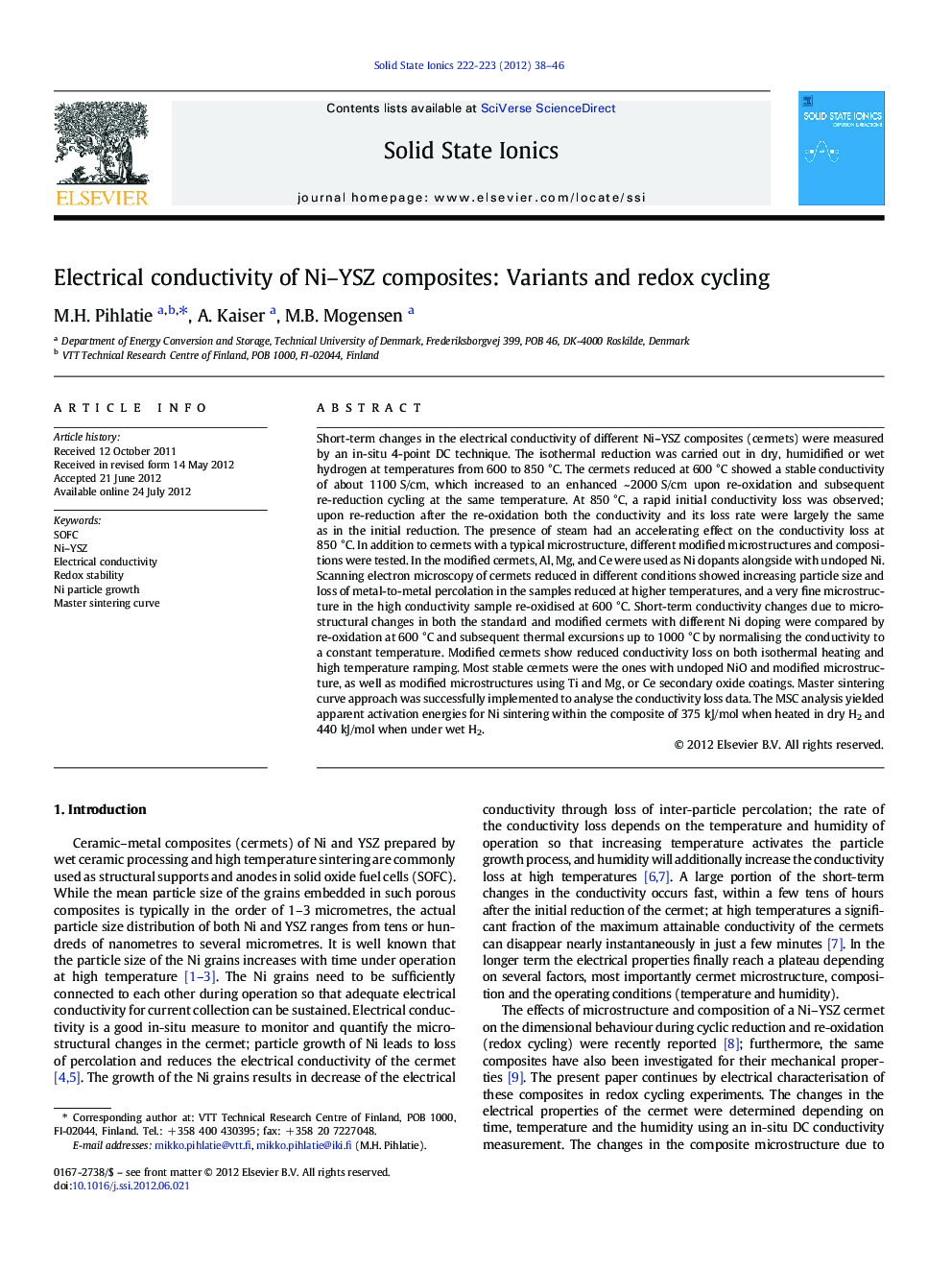| کد مقاله | کد نشریه | سال انتشار | مقاله انگلیسی | نسخه تمام متن |
|---|---|---|---|---|
| 1296023 | 1498316 | 2012 | 9 صفحه PDF | دانلود رایگان |

Short-term changes in the electrical conductivity of different Ni–YSZ composites (cermets) were measured by an in-situ 4-point DC technique. The isothermal reduction was carried out in dry, humidified or wet hydrogen at temperatures from 600 to 850 °C. The cermets reduced at 600 °C showed a stable conductivity of about 1100 S/cm, which increased to an enhanced ~ 2000 S/cm upon re-oxidation and subsequent re-reduction cycling at the same temperature. At 850 °C, a rapid initial conductivity loss was observed; upon re-reduction after the re-oxidation both the conductivity and its loss rate were largely the same as in the initial reduction. The presence of steam had an accelerating effect on the conductivity loss at 850 °C. In addition to cermets with a typical microstructure, different modified microstructures and compositions were tested. In the modified cermets, Al, Mg, and Ce were used as Ni dopants alongside with undoped Ni. Scanning electron microscopy of cermets reduced in different conditions showed increasing particle size and loss of metal-to-metal percolation in the samples reduced at higher temperatures, and a very fine microstructure in the high conductivity sample re-oxidised at 600 °C. Short-term conductivity changes due to microstructural changes in both the standard and modified cermets with different Ni doping were compared by re-oxidation at 600 °C and subsequent thermal excursions up to 1000 °C by normalising the conductivity to a constant temperature. Modified cermets show reduced conductivity loss on both isothermal heating and high temperature ramping. Most stable cermets were the ones with undoped NiO and modified microstructure, as well as modified microstructures using Ti and Mg, or Ce secondary oxide coatings. Master sintering curve approach was successfully implemented to analyse the conductivity loss data. The MSC analysis yielded apparent activation energies for Ni sintering within the composite of 375 kJ/mol when heated in dry H2 and 440 kJ/mol when under wet H2.
► El. conductivity of cermet variants was mainly correlated with as-sintered porosity.
► Redox cycling at 600 °C improves the el. conductivity from about 1000 to 2000 S/cm.
► Conductivity improvement was due to very fine Ni microstructure caused by the redox cycling.
► Master sintering curve was implemented to analyse the electrical conductivity loss.
► Apparent activation energies by MSC for Ni sintering in Ni–YSZ were 375–440 kJ/mol.
Journal: Solid State Ionics - Volumes 222–223, 20 August 2012, Pages 38–46